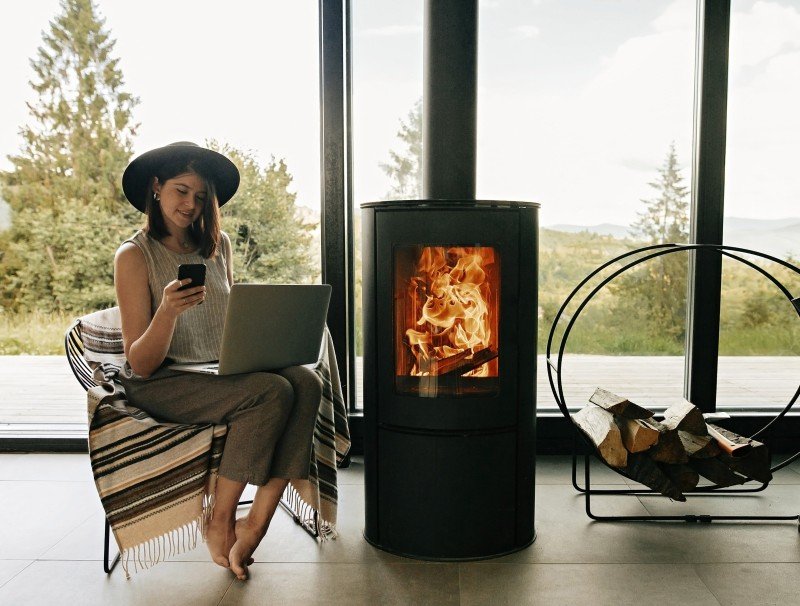The 10 Scariest Things About Fire Place To Buy
Finding the Perfect Fireplace to Buy: A Comprehensive Guide
Fireplaces have long been a symbol of heat, convenience, and home. Today, they serve not only as functional heating sources however also as striking style elements that elevate the visual of any living area. With the proliferation of designs, fuels, and technological functions, buying a fireplace can feel overwhelming. In this guide, we will explore different types of fireplaces, the factors to consider for buying, and the benefits of having one in your house.
Types of Fireplaces
Before diving into how to pick the best fireplace, it's necessary to comprehend the various types offered on the market. Below is a detailed contrast table of the most typical types of fireplaces:
Type
Fuel Source
Installation
Upkeep Needs
Common Cost Range
Wood-Burning
Wood
Needs chimney
High; regular cleaning
₤ 2,500 – ₤ 5,000
Gas Fireplace
Gas or gas
Vented or ventless
Medium; yearly checkup
₤ 1,500 – ₤ 4,000
Electric Fireplace
Electricity
Plug-in or built-in
Low; occasional dusting
₤ 200 – ₤ 3,500
Pellet Stove
Wood pellets
Requires venting
Medium; routine cleaning
₤ 2,000 – ₤ 4,000
Ethanol Fireplace
Bioethanol
No venting required
Very low; clean glass regularly
₤ 300 – ₤ 2,500
1. Wood-Burning Fireplaces
Wood-burning fireplaces are the timeless option, stimulating a conventional ambiance. However, they require proper chimney setup and maintenance to make sure safety. The cost can be on the higher side due to these needs.
2. Gas Fireplaces
Gas fireplaces offer benefit and performance. They can be vented or ventless, depending upon your space. While www.fireplacesandstove.com tend to be costlier upfront, they normally need less maintenance than wood-burning models.
3. Electric Fireplaces
Electric fireplaces are versatile and can be placed throughout the home, as they only need a power outlet. They can easily act as a supplementary heating source and can be found in various designs, from wall-mounted to freestanding systems.
4. Pellet Stoves
Pellet ranges burn compressed pellets made from wood and other materials. They require a power supply for operation and typically have a greater preliminary expense however offer terrific fuel effectiveness and ease of use.
5. Ethanol Fireplaces
Ethanol fireplaces are modern and stylish, operating without a chimney. They provide a clean-burning choice for those who appreciate visual appeals over heat output. However, they might not be ideal for heating bigger locations.
Key Considerations When Purchasing a Fireplace
When deciding on a fireplace, think about the following factors:
1. Home Size and Layout
- Open Spaces: Large open locations take advantage of effective systems like wood or pellet stoves.
- Smaller sized Rooms: Electric or ethanol models may be enough for intimate areas.
2. Fuel Source
- Pick based on availability to fuel types (wood, gas, electric) and your lifestyle (upkeep, benefit).
3. Heating Needs
- Identify the heating requirements for your space. Larger fireplaces might be necessary for larger rooms.
4. Regional Regulations
- Ensure your fireplace abides by regional building regulations and guidelines, as some districts might implement limitations on particular types.
5. Visual Appeal
- Choose a design and surface that complements your home design, whether it's conventional, modern, or rustic.
Benefits of Having a Fireplace
The advantages of having a fireplace in your house are various. Here are some essential advantages:
- Comfort and Coziness: Fireplaces develop a warm atmosphere, ideal for gatherings or tranquil nights.
- Increased Property Value: A well-placed and practical fireplace can improve your property's market price.
- Alternative Heating Source: Fireplaces provide supplemental heating throughout winter season months, which can help lower heating expenses.
- Visual Centerpiece: Fireplaces often work as the centerpiece in a room, including character and elegance to the home.
FAQ Section
Q1: How do I identify the best fireplace for my home?
A: Assess your heating requirements, space size, preferred fuel source, and aesthetic preferences to pick the best option.
Q2: Are gas fireplaces more secure than wood-burning ones?
A: Gas fireplaces typically have less security issues due to their regulated combustion and much easier maintenance, however proper setup is still important.
Q3: Can I install a fireplace myself?
A: While electrical fireplaces are appropriate for DIY installation, gas, and wood-burning designs require professional setup to guarantee safety and compliance with local codes.
Q4: What is the maintenance required for each kind of fireplace?
A:
- Wood: Regular cleansing of ash and creosote from chimneys.
- Gas: Annual check-up to examine venting and connections.
- Electric: Dusting and looking for electrical problems.
- Pellet: Cleaning out pellets and ash occasionally.
- Ethanol: Simple cleansing of the burner and glass.
Q5: How much will my heating bills increase with the addition of a fireplace?
A: This can vary significantly. Fireplaces usually provide extra heating and may minimize your total costs, however specifics depend on use and insulation.
Selecting the best fireplace to buy requires comprehending your home's needs and personal choices. Whether you choose the traditional beauty of a wood-burning fireplace or the modern benefit of an electrical unit, there's a fireplace that can fit seamlessly into your home. By thinking about the different types, setup requirements, and benefits talked about in this guide, you're fully equipped to make an educated choice and take pleasure in the heat and design that a fireplace can give your living environment. Pleased fireplace shopping!
